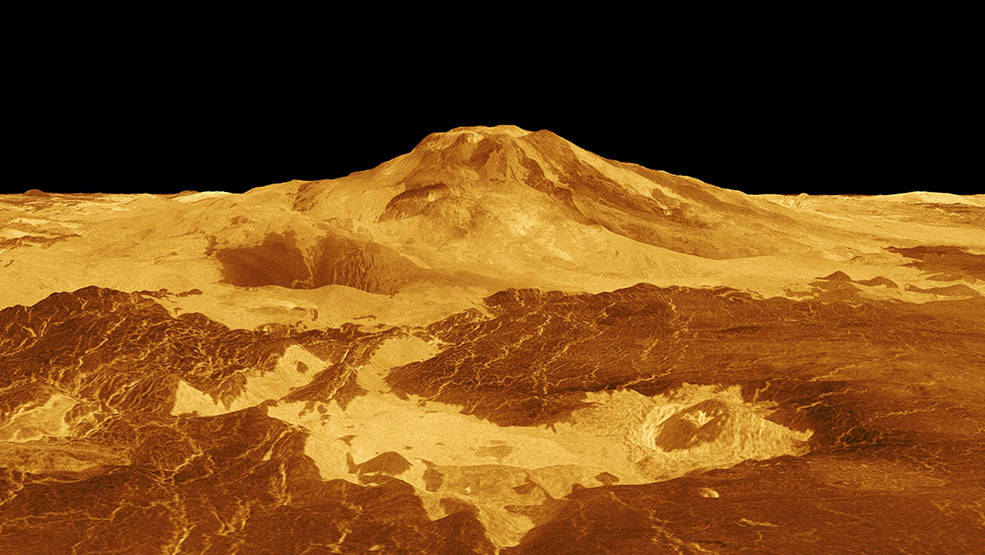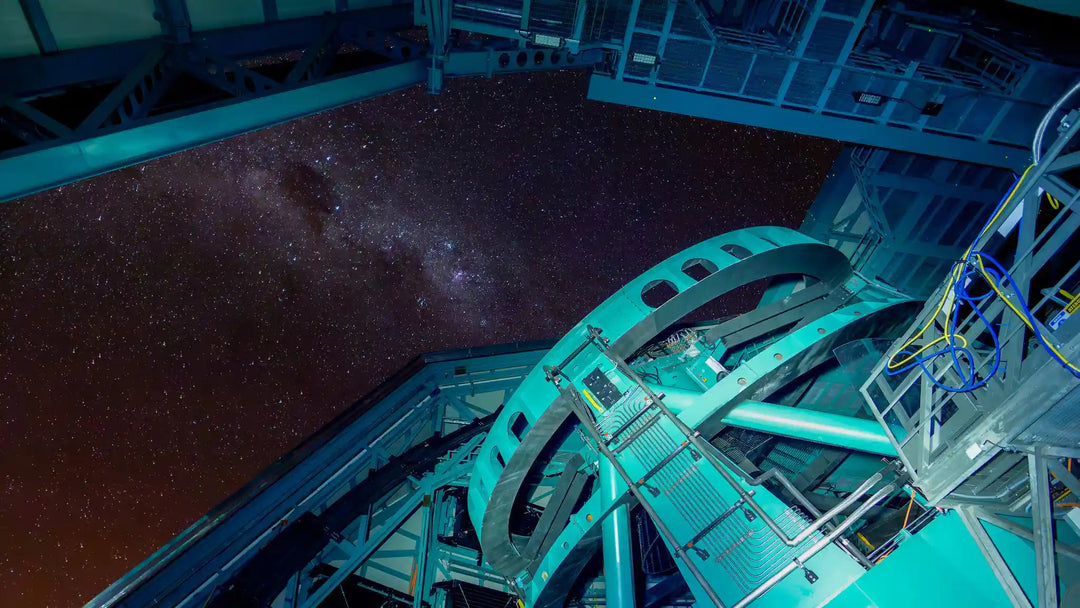Magellan shows volcanic activity on Venus – VERITAS mission to investigate

NASA scientists have discovered direct evidence of volcanic activity on Venus for the first time. The discovery was made by studying archival radar images of Venus taken over 30 years ago by NASA's Magellan mission. The images showed a volcanic vent changing shape and size significantly in less than a year, providing direct geological evidence of recent volcanic activity.
Magellan Mission's data with benefit for the VERITAS mission
NASA’s Magellan mission has long been considered one of the most groundbreaking space exploration endeavors of our time. Launched in 1989, the spacecraft orbited Venus for four years, capturing and sending back detailed radar images of the planet’s surface. These images revolutionized our understanding of Venus, a planet that had been largely shrouded in mystery up until that point.
Now, more than 30 years later, scientists have made a stunning discovery using Magellan’s archival radar images. They have observed direct evidence of volcanic activity on Venus, the first time such evidence has been seen on Earth’s twin.
This discovery could have major implications for our understanding of the planet and its geological processes.
Read more:
- The Pale Blue Dot Photo: History, Significance, and Legacy
- Pale Blue Dot Image: What About Large Format Prints like Fine Art?
James Webb Space Telescope uncovers young stars in NGC 346’s dusty ribbons
William Bill Anders Tribute: Astronaut, Earthrise Photographer, Aviator
JADES-GS-z14-0: NASA's JWST Discovering the Most Distant Galaxy
Hubble Telescope Captures a Stellar Trio: The Dawn of a Sun-like Star
Enceladus holds potential for alien life with recent discovery of vital element
Anticipating the celestial show – Betelgeuse's potential supernova event
Supernova 2020eyj: First radio signal from the massive explosion of a dying white dwarf
About VERITAS mission: start within a decade
Understanding how active volcanoes affect a planet's evolution and habitability is essential. Thus, NASA's new mission, VERITAS (Venus Emissivity, Radio science, InSAR, Topography, And Spectroscopy), will launch within a decade to study Venus from its surface to its core. The goal is to understand how a rocky planet, similar in size to Earth, became a world covered in volcanic plains and deformed terrain, hidden beneath a thick, hot, toxic atmosphere.
Robert Herrick, a research professor at the University of Alaska Fairbanks, who led the search for archival data of recent volcanic activity, said that NASA's selection of the VERITAS mission inspired him to search for recent volcanic activity in Magellan data.
Herrick led the search for archival data, and after about 200 hours of manually comparing images of different Magellan orbits, he identified two images of the same region taken eight months apart exhibiting telltale geological changes caused by an eruption.
The geological changes that Herrick found occurred in Atla Regio, a vast highland region near Venus' equator, which hosts two of the planet's largest volcanoes, Ozza Mons and Maat Mons.
While scrutinizing Magellan radar images, Herrick identified a volcanic vent associated with Maat Mons that changed significantly between February and October 1991.

Herrick and Scott Hensley, the project scientist for VERITAS, created computer models of the vent in various configurations to test different geological-event scenarios, such as landslides. They concluded that only an eruption could have caused the changes.
VERITAS will use synthetic aperture radar and a near-infrared spectrometer to create 3D global maps and determine the structure of Venus' interior. This will offer clues about the planet's past and present geologic processes. VERITAS' data will be available online, enabling researchers to apply cutting-edge techniques to analyze the planet and reveal its innermost secrets.
Check also:
Venus & Veritas Mission: More data about the mysterious planet
The upcoming VERITAS mission will provide scientists with valuable information about a planet that has long been considered enigmatic – Venus. This will be a great opportunity to learn more about it.
EnVision, a European Space Agency mission to Venus, will also complement VERITAS studies. The spacecraft will carry a synthetic aperture radar (called VenSAR), which is being developed at JPL, as well as a spectrometer similar to the one VERITAS will carry.
References
- Anderson P. S., Why did VERITAS mission scientists travel to Iceland?, Earthsky.org, [245.04.2024]
- Envision factsheet, ESA, [25.04.2024]
- ESA selects revolutionary Venus mission Envision, ESA, [25.04.2024]
- Smrekar S., et al., VERITAS (Venus Emissivity, Radio Science, InSAR, Topography, and Spectroscopy): A Discovery Mission, 2022 IEEE Aerospace Conference (AERO), Big Sky, MT, USA, 2022, pp. 1-20, doi:10.1109/AERO53065.2022.9843269, [29.04.2024]
- Hensley S., et al., VERITAS: A Mission Concept for the High-Resolution Topographic Mapping and Imaging of Venus, American Geophysical Union, Fall Meeting 2012, abstract id.P33C-1950, [25.04.2024]
- NASA’s Magellan Data Reveals Volcanic Activity on Venus, NASA, [25.04.2024]
- Veritas, JPL NASA, [25.04.2024]
- Magellan, SCIENCE.NASA, [25.04.2024]


![Vera C. Rubin Observatory: Revolutionizing Astronomy Through the World's Most Advanced Telescope [All You Need To Know]](http://astrography.com/cdn/shop/articles/vera-c.-rubin-observatory_main.webp?v=1751627507&width=1080)

Leave a comment